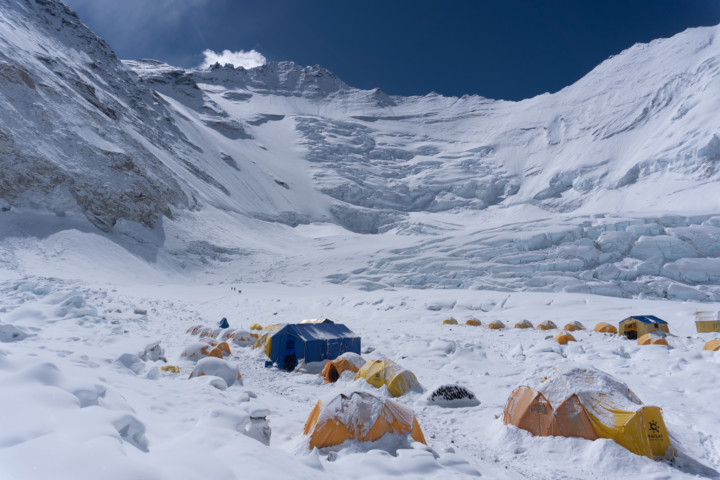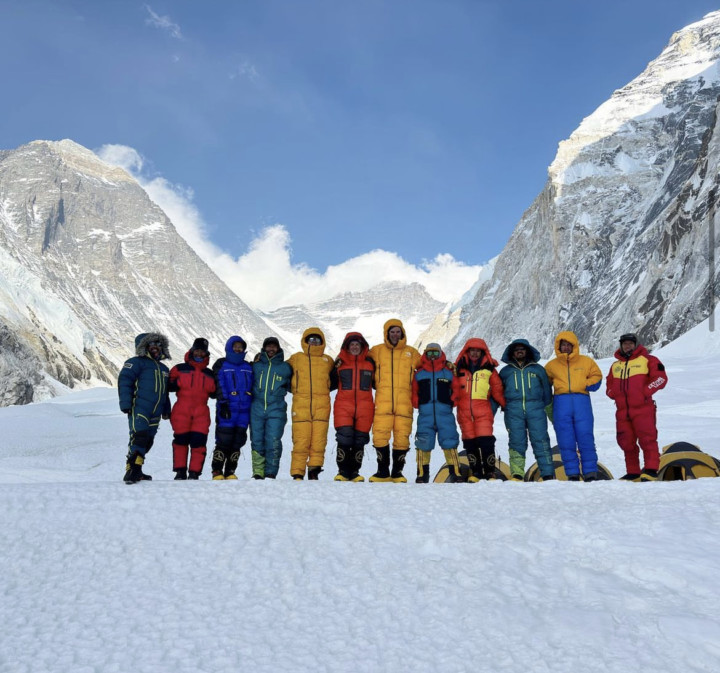Heading Back to Base
Morning 7th May
Some snow in the forecast again today, which would be helpful to improve conditions on the Lhotse Face.
Today, we are wrapping up rotations as our 30 Day Speed Climber Jesse & Guide Tomi who tagged Camp 3 yesterday drop back down to Base Camp, along Personal Sherpa climbers Aga, Darragh and 1:1 Climber Pascale.
Meanwhile at Base Camp we've been running oxygen training clinics. Doing dry runs and teaching trouble shooting. Practicing until our climbers are confident with the fit, feel and function is a critical part of any Everest expedition.
The whole team are now focused on resting deeply, eating, and readying for summit bids.
Eyes turn to the weather and the strategy. Soon it's time to head to the top of the world.





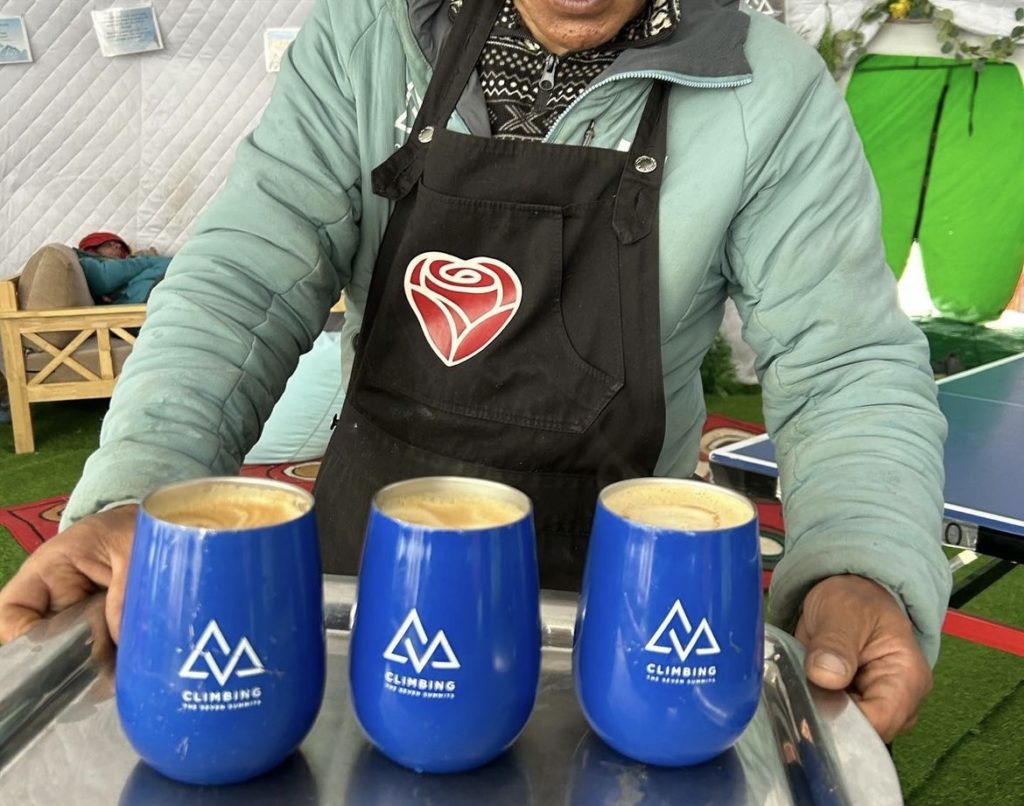
Final rotation finalizing
Monday morning, the 6th May.
Hello from the Himalaya. A quick update for you all as you round out your weekends and kick into a new week.
Things continue to be smooth on Everest; back in Base Camp; the Western Guided Team & 1:1 Private climbers, Marc, Randall, Blake & Yinghong are resting and recovering well.
Climbing up the Lhotse Face today we have Pascale and our Personal Sherpa team Aga & Darragh. There was some light snowfall yesterday afternoon, that will aid them today. Their goal is to tag Camp 3, return to Camp 2 for tonight and drop back to Base Camp tomorrow.
We really appreciate how well this team is working and climbing together as they round out their final acclimatization round and turn their focus to the summit in coming weeks.
All bodes well; the route is now open to Camp 4 and the sherpa team are hard at work staging the mountain. There is stable weather now and in the forecast, which all bode well for the rope fixing team to head to the summit soon.
Finally - a hearty farewell to our Camp 3 climber Andrea who is in Kathmandu with Guide Robert - safe travels as you make your way home and congratulations!


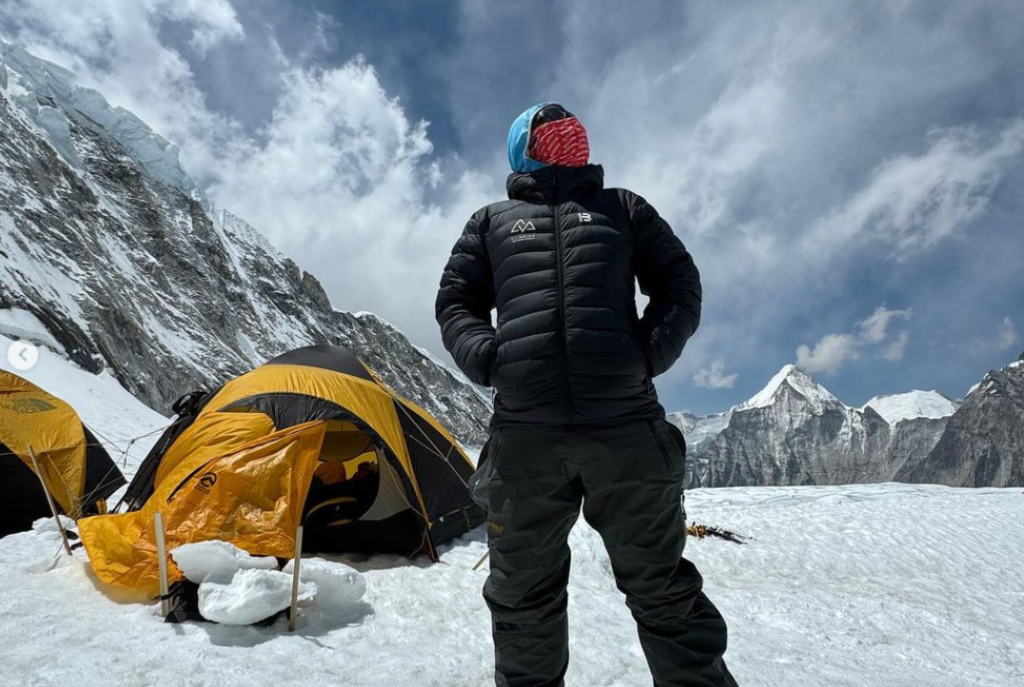


How to Choose The Right Aconcagua Expedition
How to Choose The Right Aconcagua Expedition
Share Expedition

Researching and choosing the right expedition company to support you and help guide you through all logistics, as well as be there for you on the mountain, is the most important decision you will make.
You want to do your homework so you feel 100% confident in your choice and can focus on your climbing.
We encourage you to look closely at both the big picture and the small details. Look at a company’s priority on safety, the quality and experience of their guides, their reputation, and their level of ‘care factor’.
Climbing the Seven Summits is committed to being the Gold Standard on Aconcagua and providing the highest quality expedition. You can be assured that it will be both challenging and fun, a true once-in-a-lifetime experience.
Safety & Success
Your safety and success are the top priorities, in that order. An expedition company should invest heavily and plan extensively for your safety by outfitting their teams with the best logistics and the most capable, qualified, and seasoned guides in the world.
Aconcagua is arguably one of the most underestimated peaks in the world with many climbers expecting a difficulty similar to Kilimanjaro. At Climbing the Seven Summits we believe it is in your best interest to tell it to you straight – Aconcagua is a very tough mountain! Physically it is closer to Denali than Kilimanjaro or Elbrus, with several days of carrying a full pack from camp to camp just to get in position for the summit day.
Summit day itself is one of the most arduous days of climbing on any of the Seven Summits involving 12 to 16 hours of climbing above 20,000 feet.
Beware of operators who downplay the difficulty of Aconcagua or call it a beginner peak just to bolster their team size; they often end up turning half their team back without remorse as they chase a buck. At CTSS we will be frank about the realities and challenges of Aconcagua so you can arrive properly prepared to meet your goal rather than sugar coating it as an ‘easy trekking peak’. While Aconcagua may seem ‘technically straight forward’ the length of the expedition, the weight of your pack, the extreme altitude, and self sufficient expedition style combine to make it a true big mountain experience.
Our program has been designed to keep you safe and see you succeed. Our Aconcagua climbs boast a whopping 93% client success rate overall, compared to the standard of 30-40%!
CTSS is happy to provide training suggestions and link our climbers to qualified coaches to prepare for any climb.
Look For A Slow Acclimatization Schedule
Most people fail (60-70% of people) on Aconcagua because of poor acclimatization and a rushed schedule.
Aconcagua is an extreme altitude peak and should be treated as such. To be successful you need to give your body time to adjust, even Base Camp is at an altitude of 4,200m!
Look for an expedition company that has inbuilt contingency days, a carry high, sleep low strategy, and a calm and patient ascent. Avoid expeditions that offer shorter itineraries, which – while tempting if you only have a certain amount of holiday leave from work – are detrimental to your success. (The exception to this rule is a true ‘speed ascent’ climb where you diligently preacclimatize at home.)
Everybody acclimatizes differently and how well you acclimatize can even vary from climb to climb. Be patient with yourself, be conservative, and make sure you take care of yourself (for instance, keeping a slow pace and keeping well hydrated).
Our CTSS Aconcagua guides our experts at high altitude pace setting and identifying signs and symptoms of AMS (Acute Mountain Sickness, commonly known as altitude illness) to keep you safe.
Leadership
Look for guides who are seasoned experts with a strategy that is patient, conservative, and well planned to give you the best opportunity for success.
Guides on Aconcagua should be well qualified with excellent safety records.
They need to be adept at managing a team while troubleshooting and pivoting their plan and strategy to meet the conditions of the day. It is a given on Aconcagua that plans will change and having a seasoned guide who can work through that by leaning on their own extensive experience in the mountains is key.
Guides should also have a history of assisting climbers in navigating travel in Argentina and have a solid background support structure.
Our mountaineering guide staff are second to none, and our teams also always include our phenomenal local guides who have spent decades climbing and guiding on Aconcagua, speak Spanish fluently, and can share their generous Argentinian culture with you. Our local guides are the class of the mountain, meeting and exceeding the high expectations around safety and customer service that CTSS demands.
As operators on Aconcagua we strive to be the most forward thinking and best prepared outfit on the mountain.
Customization
As mountaineers ourselves, we know not every climber is the same and a ‘one size fits all approach’ doesn’t apply very well to big mountains like Aconcagua.
Look for an operator who will customize your expedition to suit your experience, time-frame, budget and goals.
For example, pressed for time? You can do a speed ascent and pre-acclimatize at home.
Fixed departure dates don’t suit you? Craft a custom trip around your own schedule.
Want a little more ‘rugged luxury’? Opt for our Aconcagua Executive expeditions to give yourself the edge in comfort, schedules, and amenities.
Want to work with a particular guide? No problem!
CTSS can make it happen.
Marginal Gains - The small things add up!
Have you heard of the “Marginal Gains” philosophy?
The idea is that by capitalising on every little hidden advantage – 1% here, 1% there – small gains quickly compound into a huge overall improvement.
CTSS prides itself on this kind of innovation across all of our expeditions including Aconcagua. We optimize both the big details like guide staff, schedules etc, all the way through to the tiny comfort details.
For instance we plan our expedition menus using local food which is hearty and delicious vs. eating dehydrated or basic camp meals because we know well fed climbers are happy, healthy climbers with more energy on summit day.
It’s also why we invest in the nicest accommodations in base camp which include hot showers and free wifi, and provide hot drinks and other snacks to keep you energised and hydrated.
People may dismiss little luxuries as ‘soft’ but we invest in them because they are highly strategic.
No D*ckheads - No offence, we just want to climb with good people
Successfully summiting the world’s mightiest peaks requires more than just physical fitness. It also demands enormous mental strength, commitment, and most importantly, deep humility.
The ‘secret sauce’ to a great expedition is the people you share your experience with. When you have great people together in the mountains it is advantageous to everyone’s safety, success, AND ultimate enjoyment. It can be the difference between success and failure.
Most operators never even bother getting to know their clients and will blindly accept anyone who pays the bill.
CTSS is selective of both our guide staff and our clients. We will only enrol climbers who we feel will be an asset to our team and regularly deny applicants.
This screening is not about fitness, age, skillset, previous climbing experience etc. (we can create individual plans to address those), it’s about character.
It’s our goal to consciously craft a powerful, cohesive culture, and sense of belonging on all of our expeditions so that everyone can enjoy themselves in the mountains in a kind, responsible, and humble way.
If you are entitled or aren’t prepared to toe the line and be a good teammate, we’ll politely part ways.
We don’t mean to offend, we just want to climb with other like minded people who are willing to put in the work to achieve great things and become their best selves.
We think you probably do too.
Read more at https://climbingthesevensummits.com/ctss-policy/
Values & Philosophy
Does an operator have strong values?
This is sometimes a little harder to identify as it’s more a feeling than a sales pitch, but you should get a feel for a company through their little interactions, their care factor, their attention to detail, their corporate social responsibility, their environmental stewardship, their response to you.
Mountaineering can be high risk and stressful so pick an operator who has strong core values and a team mentality that aligns with yours so that when things get challenging you can rely on open lines of communication, knowing they will do what they can to support you.
It is this team cohesiveness that flows through to each individual climber and helps them stand on top.
Back to Base
Evening of 4th May
Good evening from the Himalaya, here's the latest update;
Our Western Guided Team down climbed through the Khumbu icefall today and are all safely back to Base Camp enjoying hot showers, hearty, fresh food and some well deserved rest. They will sleep well tonight at lower altitude. Successfully hitting Camp 3, they will be fully acclimatized and now start preparing and planning for their summit bids.
Here are some pics from Guide Josh McDowell of their rotations;
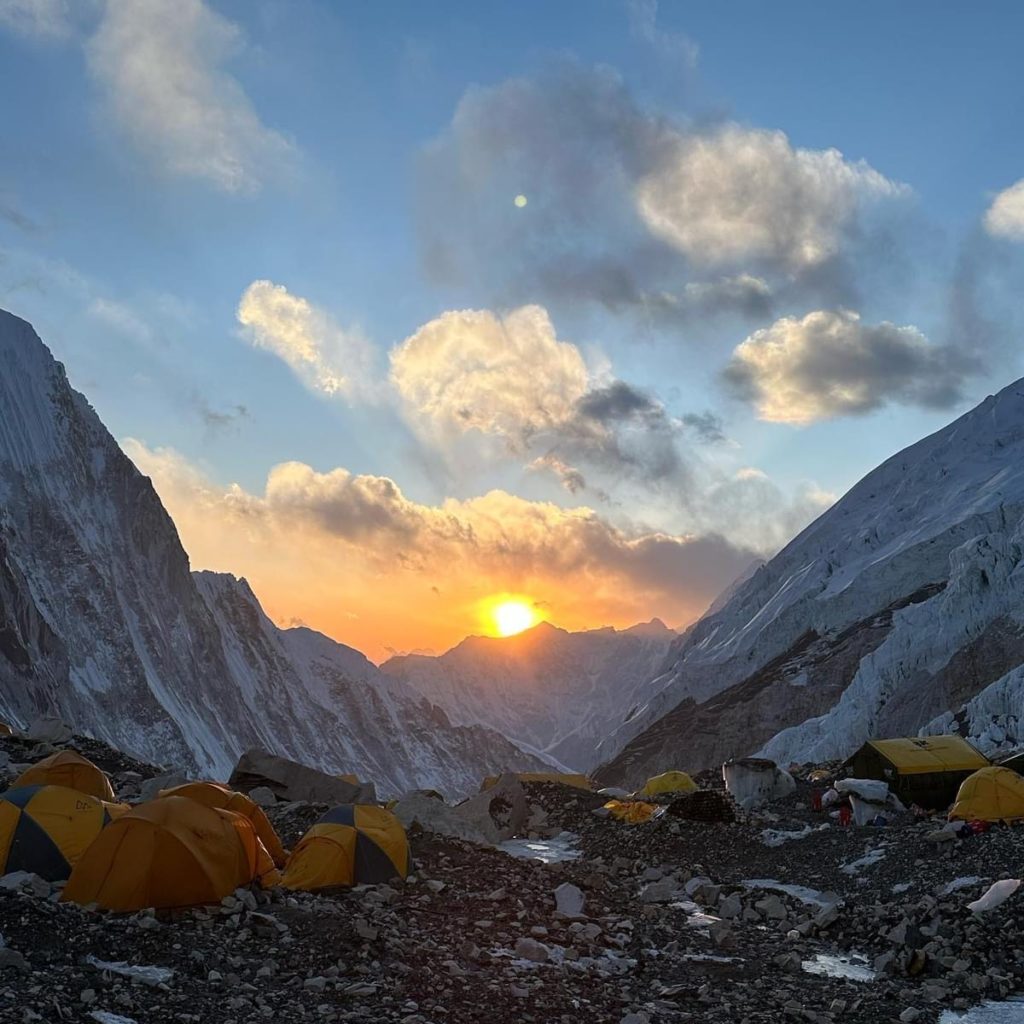

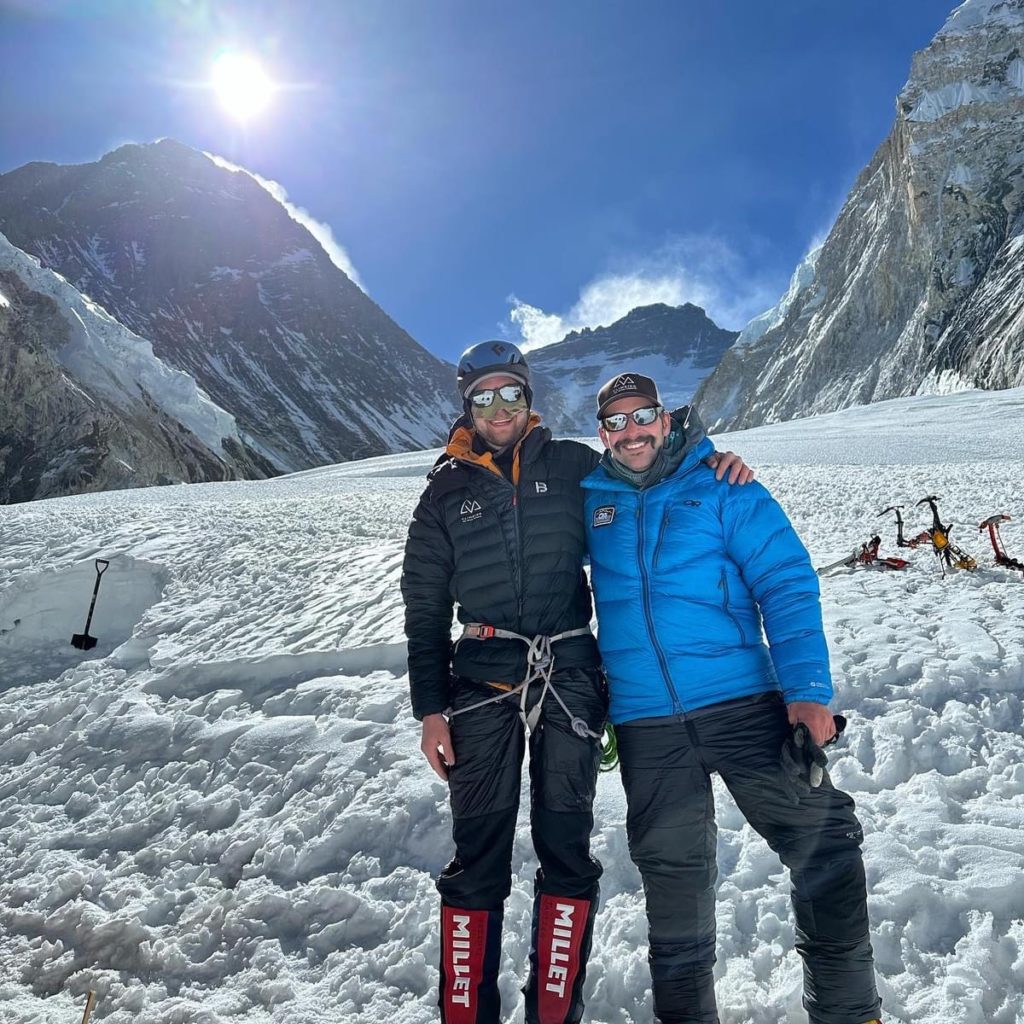





Meanwhile half our 1:1 Private Guided Climbers (Marc B, Yinghong H) are snuggled up at Camp 2 along with Personal Sherpa Climbers; Darragh O, and Aga O. Tomorrow they will head up the Lhotse Face to tag Camp 3. A day behind, looking to reach Camp 3 on the 6th May are the second half of that team (Blake, Riki, Pascale). They will then descend back to Base Camp completing their second rotation.
Our 30 Day Speed Climber Jesse and Guide Tomi are also at Camp 2, they plan to do a hike above Camp 2, and possibly head straight up to Camp 3 tomorrow.
Guide Jangbu reported in that 'climbing conditions, above Base Camp have been best in the early hours, on overcast days and particularly now the winds have dropped'
The team are doing extremely well and we are excited to complete our second rotations and have attention turn to the summit in coming weeks.
Have a great weekend!

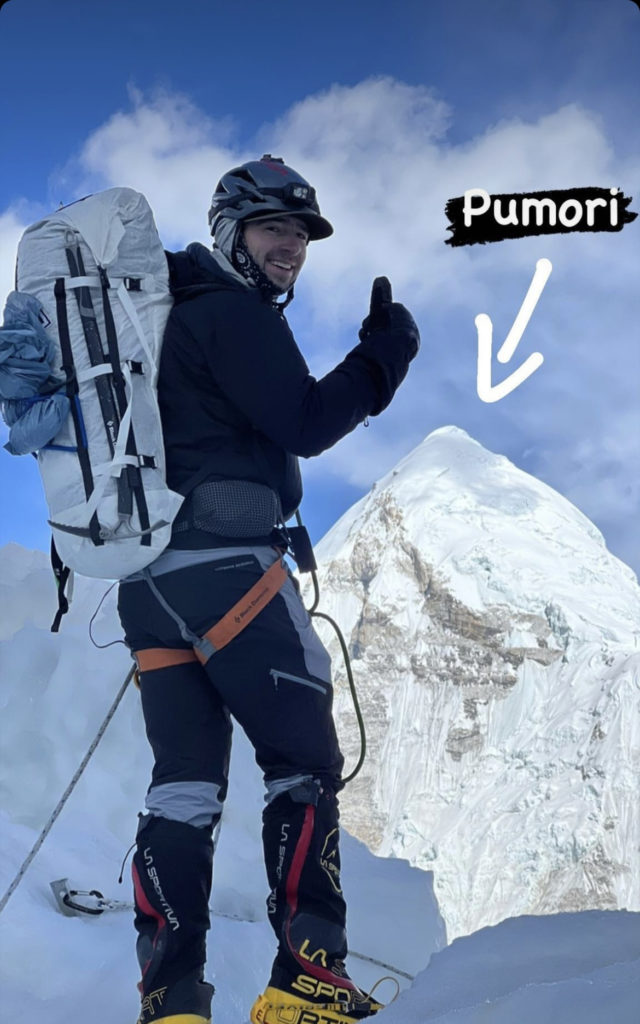



Calm and Warm in the Western CWM
Evening 3rd May
We enjoyed some nicer weather on Everest today. It was mostly calm and warm for our teams in the Western CWM.
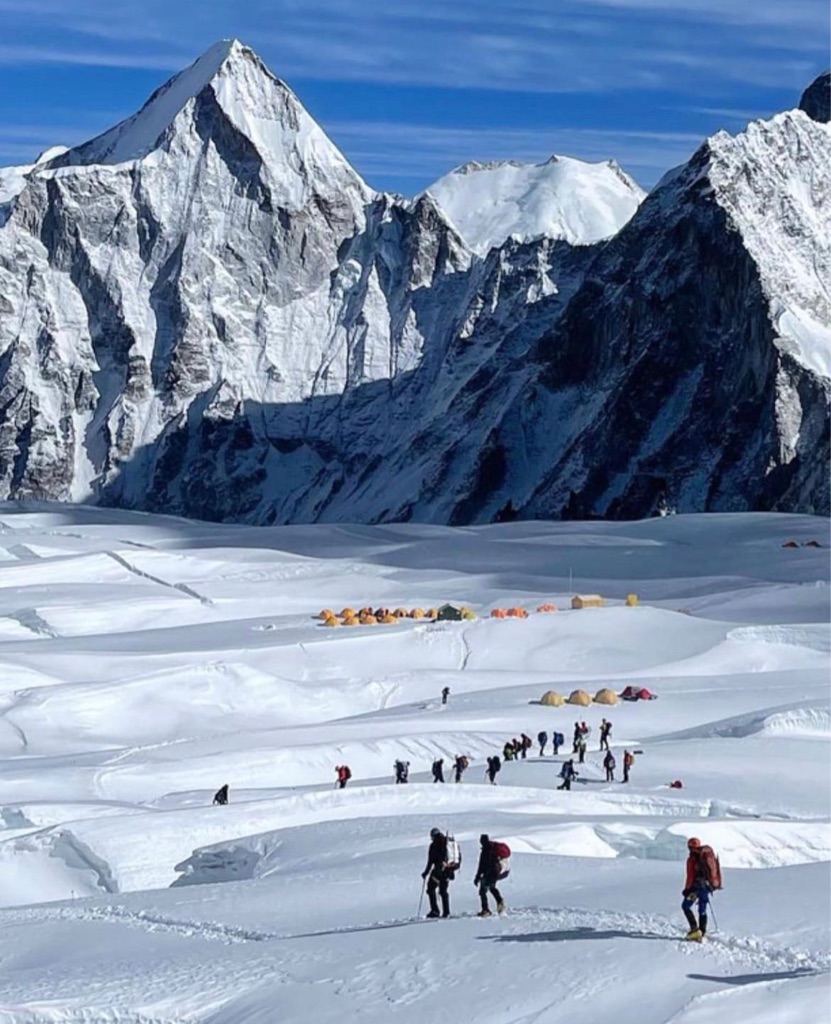 A warm and sunny day climbing through the Western CWM. CTSS Archives
A warm and sunny day climbing through the Western CWM. CTSS Archives
The Western Guided Team successfully forayed up the Lhotse Face today. This route is more challenging than in seasons past as there is very little snow on the face, so the team played it conservatively to avoid any potential rockfall. They are sleeping at Camp 2 tonight and will descend back to Everest Base Camp tomorrow.
Our 1:1 Private climbers, Marc B, Randall E, and Yinghong H are also at Camp 2. They will tag Camp 3 tomorrow, leaving early in the morning while conditions are cold and stable. They will descend and sleep at Camp 2 tomorrow night before returning to Everest Base Camp the next day.
At Camp 1, our 30-Day Speed Ascender, Jesse, Private 1:1 climbers Susan, Riki, Blake, and Pascale, as well as Personal Sherpa climbers Aga and Darragh, are settled in. Tomorrow, they will move up to Camp 2.
At Everest Base Camp, our Personal Sherpa climber Lee and Private Everest and Lhotse climber Rohan have been doing active acclimatization hikes. They plan to head uphill over the next few days.
Have a great weekend, everyone!
Mount Everest Route Tour
Evening of 2nd May
The forecasted wind stuck around a little today but should die down tonight and into tomorrow.
Tomorrow, our Western Guided Team and 40-Day Speed Ascenders plan to climb the Lhotse Face to Camp 3. In the days following, they will drop back to Everest Base Camp to rest while also beginning to plan, prepare, and look ahead to their summit bids.
Our 1:1 Private climbers, Marc B, Randall E & Yinghong, moved up through the Western CWM today to Camp 2. They are tucked in and asleep there tonight. Tomorrow, they will make a short foray above Camp 2 to the base of the Lhotse Face before returning to Camp 2 for a second night.
Jesse, our 30 Day Speed Ascender, and guide Tomi are on their long rotation. They moved successfully to Camp 1 in great time and will head to Camp 2 tomorrow.
Back at Everest Base Camp, our Private IFMGA Sherpa climbers are preparing tonight to head out just before dawn to Camp 1. Climbers and guides taking this rotation include Susan A. and guide Pega, Blake L. and guide Abiral, Riki J. and guide Lhakpa, and Pascal and guide Astani. Joining them are Personal Sherpa climbers Aga O and Darragh O.
Overall, the season is very positive. The winds are dying down, and they look to remain low for the next week, giving us an excellent opportunity to finish our rotations and prepare for our summit bids! Our Sherpa team will take advantage of the good conditions to stock Camp 4 (The South Col), and the rope-fixing teams will hopefully be able to fix tops to the summit within the next week. All is well on Everest.
Ready to walk in the footsteps of our climbing teams? Check out our virtual tour below!
High Winds to Dissipate on Everest
1st May – Welcome to May!
As predicted, we are seeing the windy weather forecasts manifest. The jet stream is battering the summit with hurricane-force winds. Thankfully, it is much calmer with moderate winds in the Western CWM, where our Western Guided team and 40-day Speed climbers are snuggled and comfy at Camp 2. The wind is due to die off late tomorrow, which is the perfect timing for the team at Camp 2 to make a foray up the Lhotse face to Camp 3.
Our 1:1 Private climbers (Marc B, Randall & Yinghong) who went up yesterday are sleeping at Camp 1 tonight and plan to move to Camp 2 tomorrow.
Jesse, our 30-Day Speed Ascender, and guide Tomi were slightly delayed and will head to Camp 1 in the early hours of tomorrow morning.
Everyone else is resting at Everest Base Camp with plans to take to the upper mountain again around May 3rd.
All is on schedule on Everest.
Cheers,
CTSS Team

Rotations are Rolling to Camp 2 and 3
30th April
Hello from the Himalayas!
Our Everest teams are doing great. We are thrilled that Camp 3 Climber Andrea and guide Robert climbed the Lhotse face today to Camp 3 successfully completing their intended goal! Congratulations! Andrea climbed on oxygen to get herself ready and prepared for a future summit climb. Experiencing climbing on oxygen, and getting a home ground advantage on the route, is one of the best ways to prepare for a future Everest Climb. They will head back to Everest Base Camp tomorrow.
Up at Camp 1, the Western Guided Team Climbers & our 40 Day Speed Ascenders are tucked up in bed. Tomorrow they will move to Camp 2. Their loose plan (depending on weather – there is a bit of wind currently and in the forecast) is to climb to the base of the Lhotse face and spend a second night at Camp 2 before heading up the Lhotse face to tag Camp 3. Finishing that rotation will have them acclimatized and ready for a summit bid.
As we type, some of our Private 1:1 Climbers including Marc B & guide Naren, Randall E & guide Dorjee, Yinghong H & guide Jangbu, Jesse (30 Day Speed Climber) & guide Tomi are waking up pre-dawn and getting ready to move up through the icefall to Camp 1 today.
Everyone else is training, resting and enjoying the amenities at Everest Base Camp.
Best wishes from Nepal!
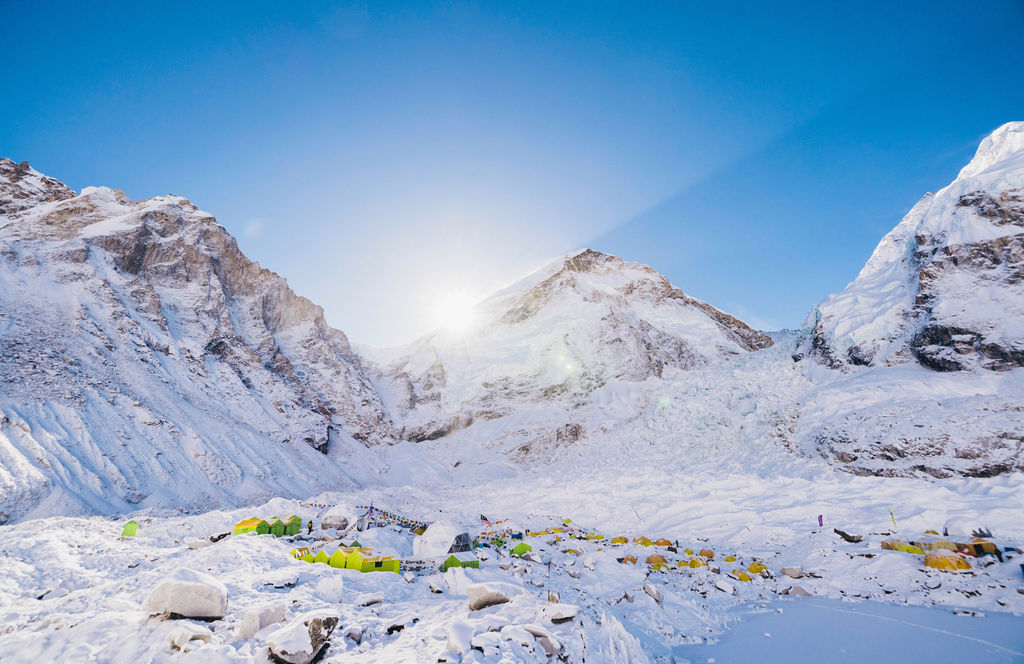

Everest Rotations are on Schedule
29th April
We hope everyone had a great weekend, we sure did! Here is the latest news from CTSS in the Himalayas.
Our Camp 3 Climber Andrea and guide Robert J are doing well at Camp 2. They are anticipating climbing the Lhotse face to tag their goal of Camp 3 tomorrow! We are wishing them both luck.
Our 1:1 Climber Susan and her guide Peg descended today to EBC to rest and celebrate their successful first rotation on Everest.
Our 40 Day Speed Ascenders have moved up to Camp 1 to begin their long rotation. As we type our Western Guided Team will be preparing to depart Everest Base Camp on their second rotation and climb through the Khumbu Icefall in the dark, cold wee hours of the morning to reconvene and meet up with the speed ascenders. They will then remain on the same schedule together. Their ultimate goal for this rotation is to tag Camp 3 before descending.


Our custom itinerary Everest and Lhotse climber Rohan and his private guide Sujan arrived at Everest Base Camp over the weekend, they will spend a few days acclimatizing and training in base camp before starting their first rotation.
Everyone else including our 1:1 Privately guided climbers and our personal sherpa climbers are continuing to rest, train, and acclimatize at EBC.
All is well! Everyone is happy, healthy, and moving well.
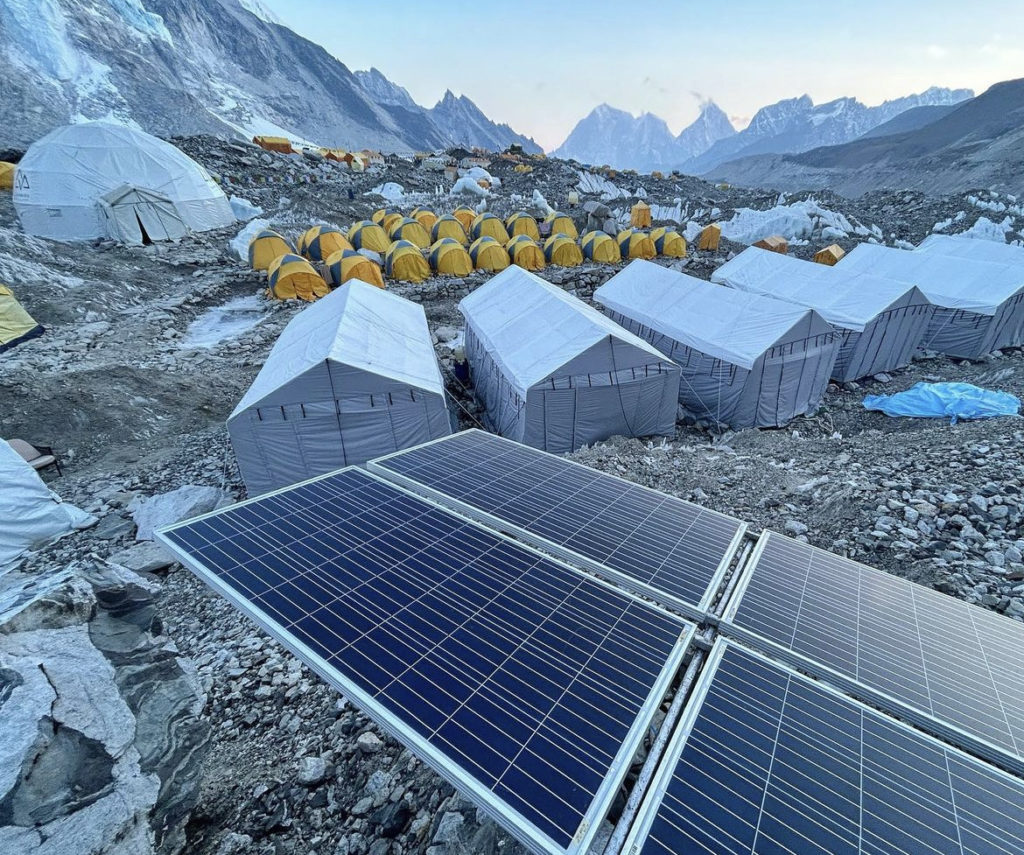

Webinars
Webinars
Join us for an upcoming live webinar, or tune into one of our past webinars!
Upcoming Webinar
Mountaineering 101:
Where to Start as a Beginner?
Join us on May 22nd, 2024, for our live webinar, Mountaineering 101: Where to Start as a Beginner. We will be joined by Mount Everest summiteers and Climbing the Seven Summits guides Robert Jantzen (CTSS senior guide), Gabby Kanizay (CTSS guide & Everest summiteer), and Meghan Buchanan (Seven Summits finisher).
During this webinar, you will learn what it takes to build a foundational mountaineering skillset that will help you progress toward your dream peaks. Including expedition skills, altitude progression, and technical training. After, Robert, Gabby, and Meghan will dive into progression climbing (one of CTSS’s specialties), their favorite pieces of gear, and how to train at home for the big mountains. Chances are, you’ll have a laugh and pick up some helpful advice for your next climb. So, bring your questions and join us!

Past Webinars
Archive of past webinars





